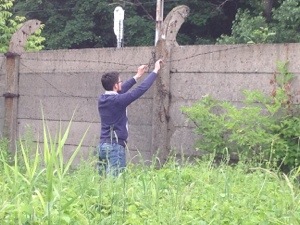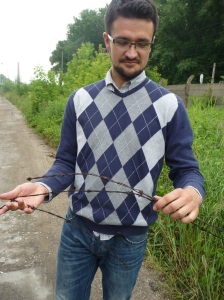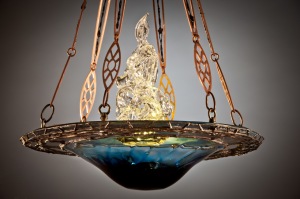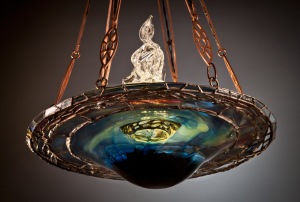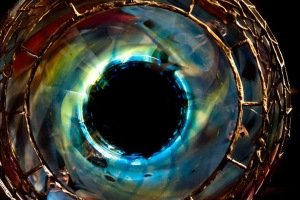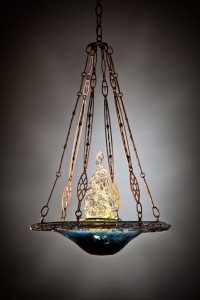In our tradition, we say that when you save a single life, you save the whole world. Our travels into the world of our roots has beckoned me to save the world of our ancestral families, and I do what I can.
Six million Jewish lives lost has always been unfathomable. Strangely, with this genealogical work, the number grows greater. Nevertheless, every new find feels like a victory, a recovery of our families and our people. These are the latest recoveries.
For 2 1/2 years I have been searching for the parents of Ruth’s two grandmothers. Since they are sisters, there is only one set of grandparents. Yad Vashem records were incomplete and inaccurate.
Szlama Chaim Szacher was born to Icek Leib Szacher and Sura Ester Lin on 12 October 1867 in Slawatycze, Poland, right near the present day border with Belarus. He married Ester Frajda Wiernik and thereby became Ruth’s Great Grandfather in keeping with Ester Frajda’s Great Grandmother designation. Hence, one half of the mystery of Ruth’s missing grandmothers is solved. They are the parents of Bluma Szacher who married Abraham Gruen, in 1921 in Czestochowa and who became the parents of Mania, Dadek, and Safta Sally. Sally’s husband Israel Hoffer also had a Szacher mother, namely Rochma, Bluma’s sister, married to David Hoffer. She is the other half of the mystery.
As of this writing the only trace of Rochma is in birth records of her children, Sara (1907), Israel (1909) and Basia (1913) in Czestochowa, many miles from Slawatycze. The search goes on for the birth record of Rochma and her marriage record with David Hoffer.
In a Yad Vashem record created by Michael Weiss, Rochma’s son-in-law, Rochma is mentioned as having been born in Brzesc in 1884 to Shlomo and Ester. She along with her sister Bluma were murdered by the Nazis in Czestochowa. Rochma was only 58, Bluma 47.
Brzesc is not far from Slawatycze (home of the Szachers) and Biala Podlaska (home of the Hoffers). A new train line from Brzesc to Biala Podlaska had just been built.. As the first born, perhaps Rochma was married off to David Hoffer, in her late teens, sometime at the beginning of the 20th century, Rochma married and the Hoffer family, seeking better economic opportunities moved to Czestochowa, over 400 km west. Why Czestochowa – we are not sure.
The Szachers had been in Slawatycze for over 200 years, so this must have been a wrenching move. Other Szachers accompanied the married couple. By 1907, Rochma was giving birth in Czestochowa. Bluma, her sister, born in 1895 in Slawatycze most likely was in the entourage to Czestochowa. There she met Abraham Gruen, born in Truskolasy, and married in 1921. Safta Sally was born in 1924.
It makes you wonder what life was like for the Szachers in Slawatycze. It was just just a little shtetl. Of the approximately 2000 inhabitants, half were Jews. How religious were they? What did they do? Rochma’s husband David Hoffer is mentioned as being a merchant later in Czestochowa. A brother, Abram Majer, dies at age 10 in 1898. There is no diagnosis on the death record.
We genealogists are used to “brick walls.” This term means the point you reach conducting genealogical research where the data allows no further progress. I am curious about so many things. Where is Rochma from? Why can’t I find a record of her birth? What are the circumstances leading up to her ending up in Czestochowa? Where is a record of her marriage to Abraham Gruen? In those days, probably, not everything was recorded. Or if it was, World War II obliterated some of the records. How do I climb over the brick wall, or around it? I am too old for pole vaulting.
Having found Bluma, one grandmother, makes me even more obsessed with finding her sister, Rochma, Ruth’s other grandmother. It is unusual to have two grandmothers who are sisters, but that should actually make the genealogical task easier, not more difficult. Are there other researchers who may have Szachers in their family tree? Have some records, untouched by the comprehensive tentacles of JRI-Poland and the Mormon Church, been waiting to be discovered? Perhaps there are others in Blogland, or Slawatyzce/Czestochowa Genealogyville who will read this and offer help.
I wait by the brick wall and hope.
